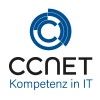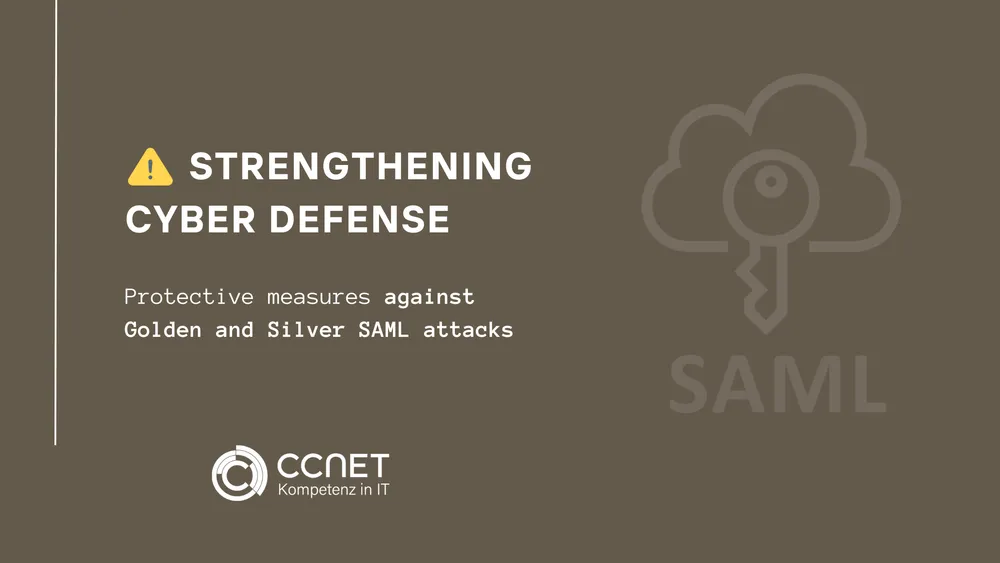
CCNet
Nov 5, 2025 • 3 min read

The price of uncertainty: Why investment is rising, but so is risk
The paradox: More spending, same risk
Year after year, companies are spending more on IT security—and yet cyber risk remains high. The reason is uncomfortable: investments are often spread across isolated individual products, without a robust target architecture, without hard operational goals, and without reliable metrics. The result: higher licensing and operating costs, but little gain in detection, containment, and recovery. Those who only buy instead of building capabilities produce visible activity – but little measurable protection. In short: without stringent risk management and clear guidelines, any additional security budget becomes an expensive waste of resources.
Where the money goes: tool zoo & handover gaps
The “tool zoo” is not just a purchasing issue, but an operational risk. Each additional product brings connectors, logic, roles, maintenance, upgrades, and new sources of error. Handoffs between teams become areas of friction: alerts wander through multiple systems until someone actually evaluates them. Attackers exploit precisely these latencies. Typical symptoms:
- Duplicate monitoring, but no end-to-end view.
- Conflicting policy sets because each solution does its own thing.
- High change costs because every change affects multiple silos.
- Dependence on individual vendors who paralyze entire chains in the event of disruptions.
Without tool consolidation, integration effort and complexity increase faster than the security gains. This is evident in incidents: the more tools involved, the longer correlation, approval, and containment take.
Architecture before purchasing: guidelines that work
If you want to convert your security budget into tangible protection, don't start with a new RFP, but with architectural principles:
- Use case first: First, define which top 5 attack paths need to be addressed (identities, email, endpoints, external apps, supply chain). Then select what covers these paths with minimal redundancy.
- Data flow as a priority: Telemetry is collected and evaluated according to a common scheme. No analysis without a complete, uniform data path.
- Zero trust default: Identities are gatekeepers. Zero trust enforces strong authentication, minimal rights, and continuous verification—for people and machine accounts.
- Exit plan & interoperability: Every core component needs a documented exit path (alternatives, migration steps). Proprietary dead ends should be avoided.
- Automation over manpower: Standard responses (isolation, blocking, ticketing) are automated so that analysts can examine real attack logic.
These guidelines reduce complexity and create the conditions for getting more protection from fewer tools.
Metrics instead of opinions: What executives need to see
It is crucial to link budgets to impact – not to “perceived” maturity:
- MTTD/MTTR (by criticality): How quickly do we detect and resolve incidents by severity?
- Identity hygiene: Proportion of privileged actions with JIT approval, orphaned account rate, lifecycle for secrets/tokens.
- Patch SLOs: Internet-exposed criticalities in days, internal criticalities in defined weeks.
- Coverage: Coverage of critical log sources and endpoints; tested recovery procedures per business process.
- Tool coefficient: How many products per use case? Goal: minimum number with maximum use case coverage.
When these metrics are incorporated into clear quarterly steering, risk management can finally be measured by results – not by the length of shopping lists.
90-day plan: From tool zoo to capability
Day 0–15 – Create transparency
- Inventory of all security tools and core use cases (phishing, endpoint, identity, web, supply chain).
- Assignment: Which tool delivers which verifiable contribution? Mark duplicates.
- Draw KPI baseline (MTTD/MTTR, patch SLOs, coverage, identity hygiene).
Day 16–45 – Consolidate & harden
- Tool consolidation: Maximum of one primary platform per use case + clearly defined additions.
- Harmonize data flow (uniform schema, central correlation, clear alarm criteria).
- Prioritize identities: phishing-proof MFA, disable legacy flows, pilot JIT privileges.
Day 46–75 – Automate & practice
- Automate standard responses (isolation, account lock, ticket creation, communication paths).
- Test playbooks with specialist departments (including out-of-band communication).
- Perform disaster recovery drills for the top two processes and measure times.
Day 76–90 – Refine & anchor
- Compare KPIs against baseline; fill gaps with precise measures.
- Document exit plans for critical dependencies.
- Decide on quarterly steering with clear target values (budget follows impact).
Conclusion: Make investments visible – reduce risk noticeably
More money only helps if it is tied to architecture and impact. Those who think of IT security as a capability – not a collection of products – reduce cyber risk, accelerate response times, and lower operating costs. The recipe is simple: clear guidelines, strict KPIs, consistent tool consolidation, and a controllable security budget. Anything else is just expensive window dressing.
Further information can be found here: cybersecurity
FAQ about blog post
Why is the risk increasing despite higher spending?
Tool zoo, lack of consolidation, no end-to-end metrics.
How can I prevent budget idle time?
Purchase use case first, standardize data path, anchor SLOs.
Which metric convinces board members?
Time-to-contain per criticality – directly cost-relevant.
Is a platform instead of best-of-breed the solution?
Only with interoperability and an exit plan; otherwise, there is a risk of lock-in.
What are quick wins in 30 days?
Decommission duplicate tools, trim alarm floods, automate initial measures.


